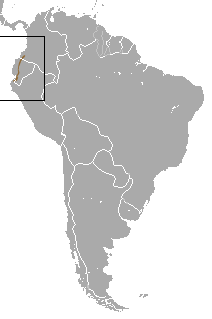| Little woolly mouse opossum | |
|---|---|
 | |
| Scientific classification | |
| Kingdom: | Animalia |
| Phylum: | Chordata |
| Class: | Mammalia |
| Infraclass: | Marsupialia |
| Order: | Didelphimorphia |
| Family: | Didelphidae |
| Genus: | Marmosa |
| Subgenus: | Micoureus |
| Species: | M. phaea |
| Binomial name | |
| Marmosa phaea Thomas, 1899 | |
 | |
| Range | |
| Synonyms | |
| |
The little woolly mouse opossum (Marmosa phaea) is a nocturnal, arboreal and mainly solitary species of South American marsupial in the family Didelphidae. [2] It is native to the western slopes of the Andes in Colombia, Ecuador and Peru, where it lives at altitudes from sea level to 1,500 metres (4,900 ft). [1] It primarily inhabits lowland rainforest and montane cloud forest, although it has been reported from dry forest in the southern end of its range. [1] It was formerly assigned to the genus Micoureus , which was made a subgenus of Marmosa in 2009. [3] Its conservation status is vulnerable, due to habitat fragmentation and continuing loss of habitat via urbanization and conversion to agriculture. [1]
